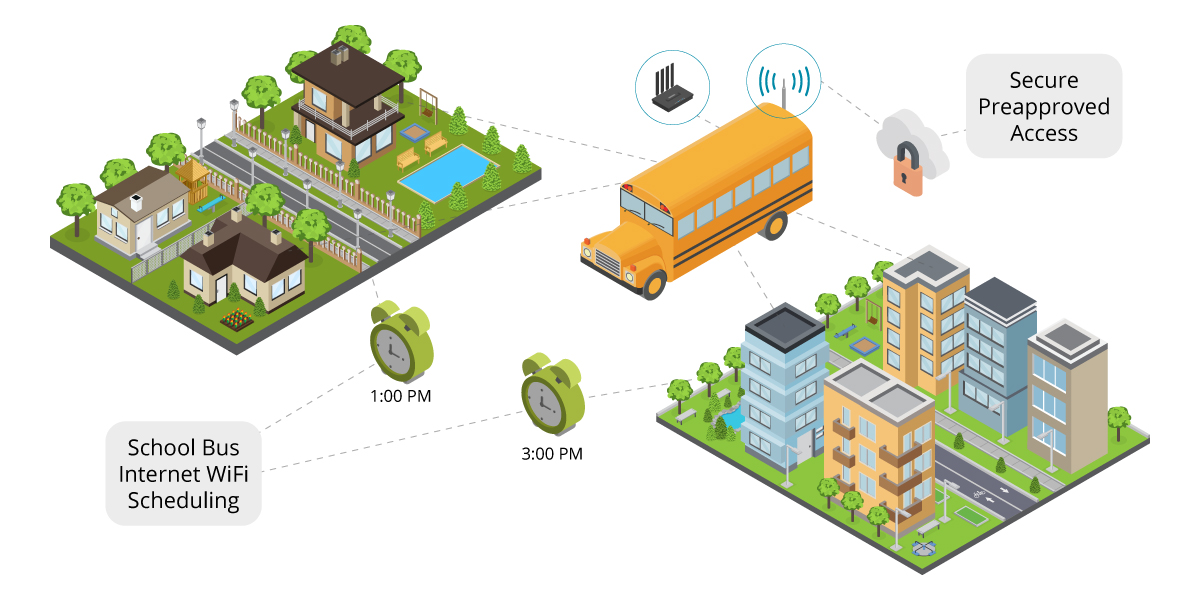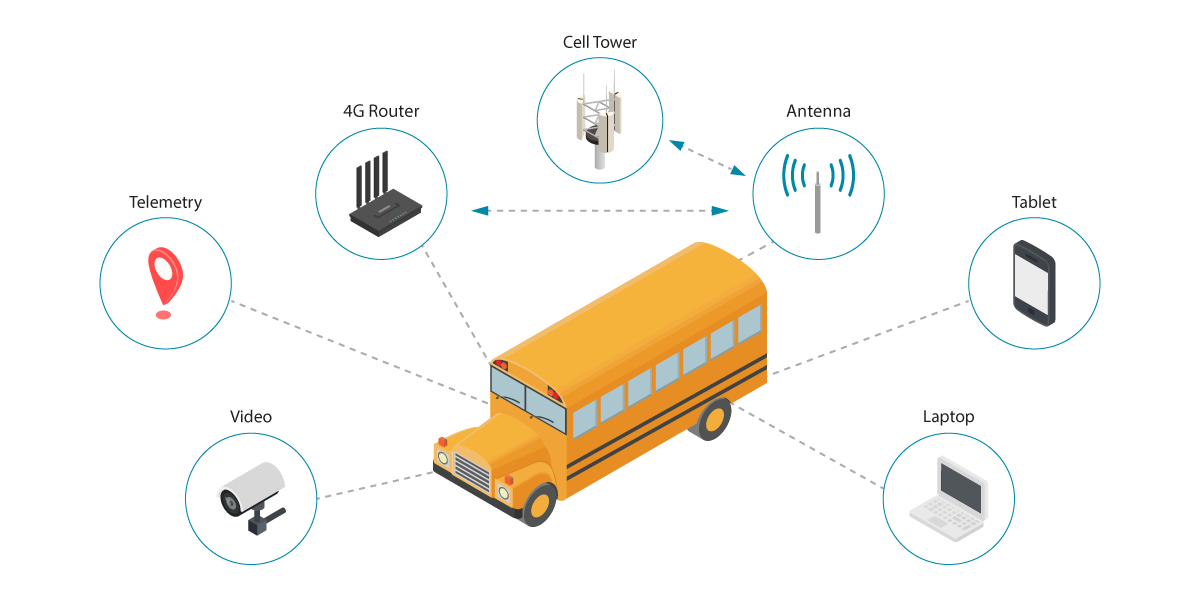School Buses to Provide Mobile Hot Spots
USAT Case Study | Connecting Students to Home-Learning Opportunities
With most of the nation’s schools closed due to social distancing initiatives, the rapid development and expansion of distance learning programs is underway. Unfortunately, due to poor connectivity, not all students will be able to take advantage of these learning opportunities. Many children in both rural and urban areas do not have access to hardwired and wireless internet connections. Additionally, many that do have access, suffer from slow or intermittent connections.
Current Challenge
Educators were caught unprepared to coordinate switching to 100% home-based learning curriculum. To complicate things further, school administrators weren't prepared to coordinate the logistics of providing reliable internet access to students. Students need access to benefit from the curriculum currently being deployed.
Immediate Needs
School systems need a way to provide internet access to as many students as possible, as quickly as possible, until the end of the current health crisis.
Therefore, they need quick and cost-effective solutions that benefit the greatest number of students possible.
Recommended Solution
Luckily for students and educators nationwide, those of us in the wireless communications industry have put our heads together to develop solutions for this and many other problems caused by the current health crisis. School buses pose a solution to the connectivity problem. Most school buses are currently gathering dust in school parking lots. However, those same buses could be providing internet access to those in your school districts who need it most.

Actions for Today
USAT will help each school equip their bus fleets with wireless routers and gateways and range extending antenna systems. Afterwards, those buses can be deployed to urban and rural communities to broadcast free public wireless internet to students in need. Bus drivers never need to leave the vehicle, and students never need to gather too closely.
Actions for Later
School systems can keep those same connectivity devices in play even after the world returns to normal. As a result, student bus riders with unreliable internet connections at home will benefit greatly. Because of the bus WiFi, they will be able to study and download materials they need while in transit to and from their homes (especially helpful on long rides).
Rural Solutions
For widely dispersed student bodies, or limited vehicle availability, scheduling is the answer. School systems can plan routes for their buses with stops in different neighborhoods for set periods of time. In addition, schools can send notifications to parents. They can be informed as to when the buses will be in their neighborhoods to schedule their children’s learning activities accordingly.

Security Solutions
Schools expressed concerns over restricting access to the internet to only students. Because of that, schools are able to apply security and network access controls to restrict access accordingly. School systems can provide limited access to preapproved websites and learning materials. In doing so, they can prevent WiFi abuse by non-students in the communities your buses visit.
In Summary
The bookmobiles of the past brought generations of Americans reading materials when they could not get to a library or otherwise access the books their studies required. The school bus can now go down in the history books for bringing students their internet lessons when they needed them most.
Key Points
- Students can gain access to free public school-provided WiFi to access lesson plans and other school-provided educational resources.
- Students can gain access to the Internet--while still following social distancing guidelines.
- You can dispatch school buses to community parking lots, apartment complexes, or other areas easily accessible to the student body.
- Scheduling can help mitigate scarce resources and lead to helping a larger number of students over more dispersed areas.
- Controls set on the WiFi can limit where the students navigate to “school provided educational resources.”
- Deployed communications assets will provide students with valuable connectivity well beyond the current health crisis
- For schools that do not currently have the budget to WiFi technology on their buses, USAT offers other types of deployable units.
Contact USAT
If your school needs a solution quickly, USAT has the equipment in stock and can provide installation services. Our installation technicians are ready to install hot-spots into school buses rapidly. We have installation teams in Alabama, Florida, Tennessee, Georgia, North Carolina, South Carolina, Virginia, and some regions in Texas and Colorado.
USAT has broadband, secure, WiFi hot-spots and high-powered antenna assemblies designed to cover broad areas, like parks and parking lots. USAT offers solutions from top-tier providers like Cradlepoint and Sierra Wireless. In some cases, we can accommodate shorter-term rentals through special programs.
Footnotes
The focus of this case study is on bringing internet access to students issued stay-at-home orders. However, by employing the solution detailed here, schools can opt-in to an even greater level of benefits than covered by this article. Know where your buses are, how fast they're traveling, and more.

Once equipped with IoT networking devices, schools gain the ability to access hundreds of router, network, and vehicle parameters in real-time such as:
- Creating custom alerts
- Event triggers
- Automatic data dumps
- Automated reporting
- Vehicle GPS and Telemetry
- Automatic Vehicle Location
School's will gain the ability for fast, reliable, and precise vehicle data, even in the most challenging environments. Click below to download a single page PDF that reviews these additional benefits.
Share this Post














